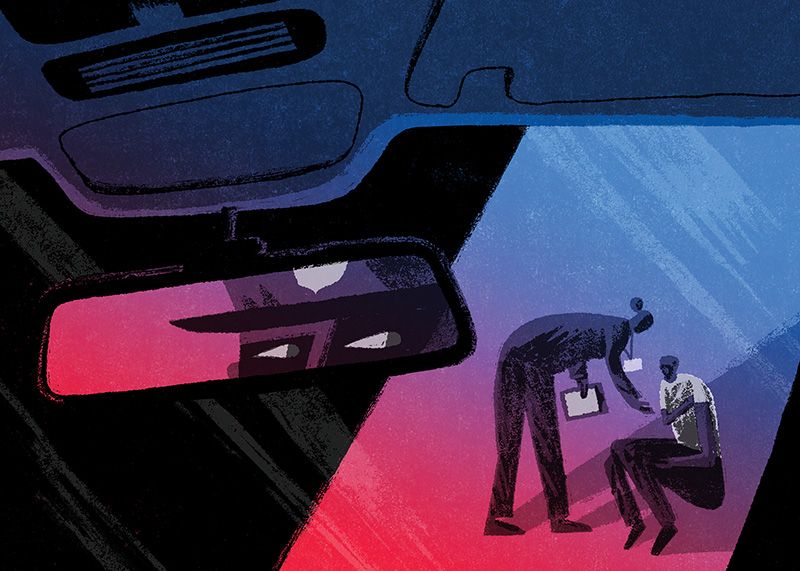Effort Underway in Ann Arbor to Launch Unarmed Police Alternative
In Ann Arbor, Michigan, The Coalition for Re-Envisioning Our Safety (CROS), the central grassroots group is pushing for a non-police public safety program.

This article was originally post on August 2022 by Hour Magazine and it was written by By Steve Friess and Illustration By James Heimer
The ongoing spike in homicides across the nation has reduced the 2020 rally cry of “Defund the Police” to a political punch line. Nobody but the most strident progressive says that anymore, and President Joe Biden nailed the coffin shut on the concept with one line of his 2022 State of the Union address: “The answer is to fund the police with the resources and training they need to protect our communities.”
In Ann Arbor, though, the debate is still very much alive. An effort is underway to launch an experiment in which some emergency calls would elicit a response not from officers with guns but by unarmed crisis intervention experts — possibly unconnected to police. The City Council in April allocated $3.5 million in federal COVID-19 relief funds to “unarmed response,” a nebulous term that the city administration is still working to define.
The big question: Will that mean a parallel emergency response system with an alternative number to 911, staffed by non-police and unaffiliated with law enforcement? Or will it be an expansion of a first-in-Michigan program in which 911 dispatchers send out social workers from Washtenaw County Community Mental Health, or CMH, as first responders on some nonviolent mental health-related calls in which an armed response is unnecessary?
“An unarmed response is not a true unarmed response unless it is unarmed non-police,” says Hoai An Pham, an organizer for the Coalition for Re-Envisioning Our Safety (CROS), the central grassroots group pushing for an alternative system. “Our hope is that the program that is selected will be aligned with our values.”
That still remains to be seen. The city has put out a request for proposal, and the City Council will need to make a decision sometime this year. CROS envisions running a parallel system that would cost $3 million a year, money the activists say could come from the police budget given that their work would mean police officers would not be responding to as many calls.
The Rev. Donnell Wyche, another CROS leader and senior pastor at Vineyard Church Ann Arbor, posits the scenario of a neighbor dispute over, say, a fence. “There’s no number to call to get someone to help you and your neighbor deescalate the argument,” he says. “The police aren’t going to be able to help you. [CMH] isn’t going to help you. So where do you go? When we imagine what an unarmed non-police public safety response program looks like, we want one that could handle calls like that. That doesn’t exist in our county. Right now, there’s nobody you could call to help you with that.”
What’s more, a parallel system is needed because many people in marginalized communities fear the police, according to Paul Fleming, a professor of health behavior and health education at the University of Michigan School of Public Health. “There are certain folks in our community who distrust the police, so it’s important for those folks that they have a resource they can rely on,” Fleming, also a member of CROS, says. “Trust is a really big piece of any kind of new response program. I’m specifically talking about a non-police, unarmed response program. Its employees do not carry guns and respond to incidents that are occurring in their community.”
Yet the idea of a program of crisis response that is completely unconnected from the 911 emergency system is troubling to Washtenaw County Sheriff Jerry Clayton. Clayton was a driver of the millage supporting the program that sends CMH personnel on 911 calls. In Washtenaw County, all police calls are handled by the county’s dispatch system.
“There have been situations where, in the original call, nobody had a weapon,” Clayton says. “Nobody was in danger. Nobody was being threatened. So it would fit the criteria and we’ll just send a clinician, but then, all of a sudden, it starts to escalate, and by the time the clinician gets there, you now need a police officer. So that’s always going to be the possibility. There might be the time where that clinician arrives and they have to disengage and wait for the police to come before they can reengage.”
Pham and Wyche point to support for their concept from City Administrator Milton Dohoney and Ann Arbor Police Chief Mike Cox, who have both been supportive of dedicating more resources to diverting nonviolent calls away from armed police. But in all their public statements, they never suggest an entirely different dispatch center and a complete detachment from law enforcement. In a December report to the council recommending the $3.5 million allocation, for instance, Dohoney recommended they work with CMH for mental health calls (as the county already does) and, for other types of calls, design a program involving CROS that “complements the work of CMH and the sheriff” while continuing to route calls through 911.
CROS, however, is done waiting for Ann Arbor to create the program it hopes to see. In May, the group announced it would be launching the unarmed non-police response program it envisions with or without the city’s support and is seeking funding for the effort from both the government and nonprofit sectors.
“We want to be able to hire and train people to be leading street teams,” Pham says. “So we’re committed to whatever investment is needed — whether that comes from the city or not.”